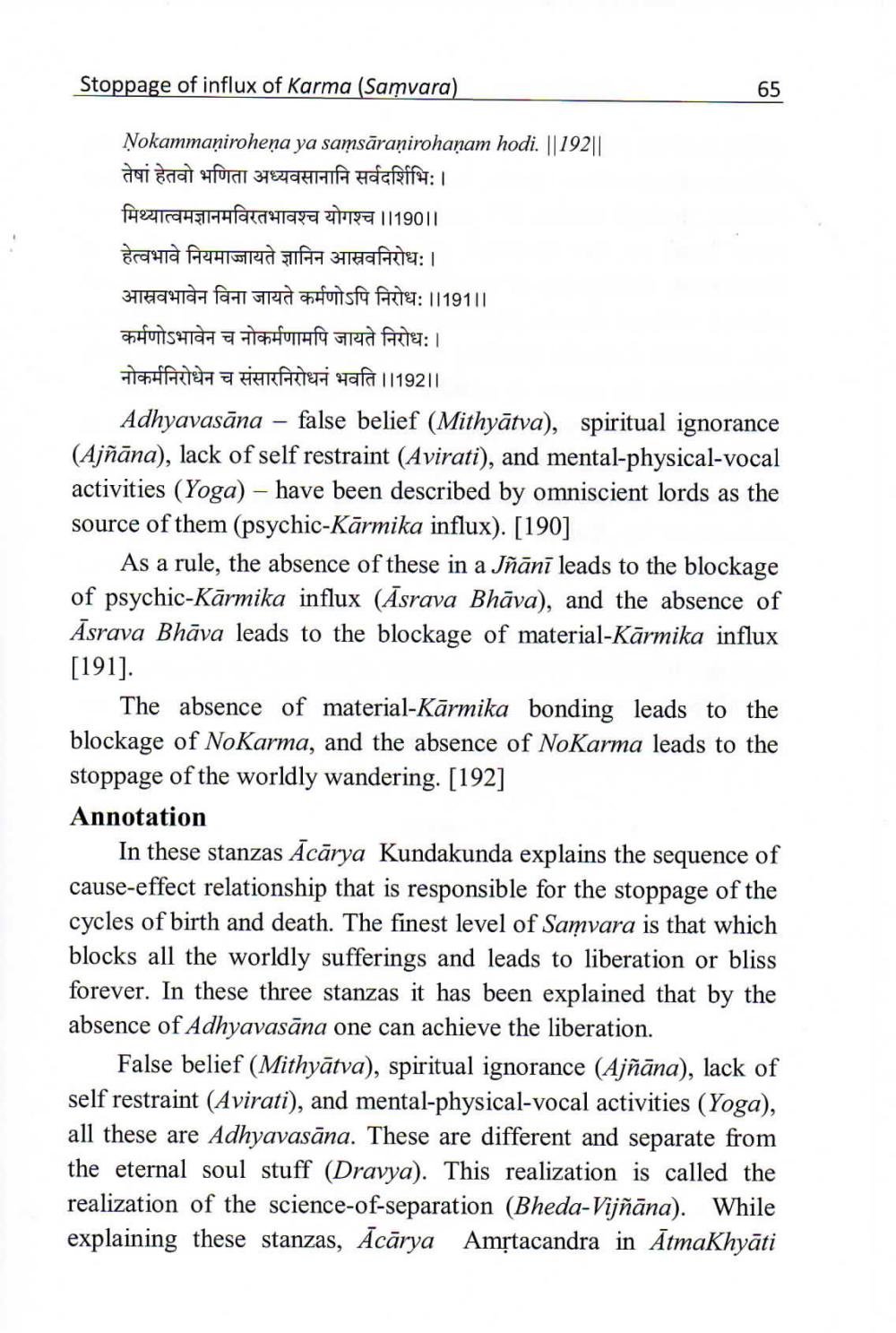________________
Stoppage of influx of Karma (Samvara)
65
Ņokammaņiroheņa ya samsāraņirohaņam hodi. ||192|| तेषां हेतवो भणिता अध्यवसानानि सर्वदर्शिभिः । fuezahshufaaHrana UTHIRE |19011 हेत्वभावे नियमाज्जायते ज्ञानिन आस्रवनिरोधः। 34THaylda fahr fred adfunt sfa ALTE: 1119111 कर्मणोऽभावेन च नोकर्मणामपि जायते निरोधः ।
ehfATT E HARATH Hafat 1119211
Adhyavasāna – false belief (Mithyātva), spiritual ignorance (Ajñāna), lack of self restraint (Avirati), and mental-physical-vocal activities (Yoga) - have been described by omniscient lords as the source of them (psychic-Kārmika influx). [190]
As a rule, the absence of these in a Jñānī leads to the blockage of psychic-Kārmika influx (Asrava Bhāva), and the absence of Asrava Bhāva leads to the blockage of material-Kārmika influx [191].
The absence of material-Kārmika bonding leads to the blockage of NoKarma, and the absence of NoKarma leads to the stoppage of the worldly wandering. [192] Annotation
In these stanzas Ācārya Kundakunda explains the sequence of cause-effect relationship that is responsible for the stoppage of the cycles of birth and death. The finest level of Samvara is that which blocks all the worldly sufferings and leads to liberation or bliss forever. In these three stanzas it has been explained that by the absence of Adhyavasāna one can achieve the liberation.
False belief (Mithyātva), spiritual ignorance (Ajñāna), lack of self restraint (Avirati), and mental-physical-vocal activities (Yoga), all these are Adhyavasāna. These are different and separate from the eternal soul stuff (Dravya). This realization is called the realization of the science-of-separation (Bheda-Vijñāna). While explaining these stanzas, Acārya Amộtacandra in Atmakhyāti




